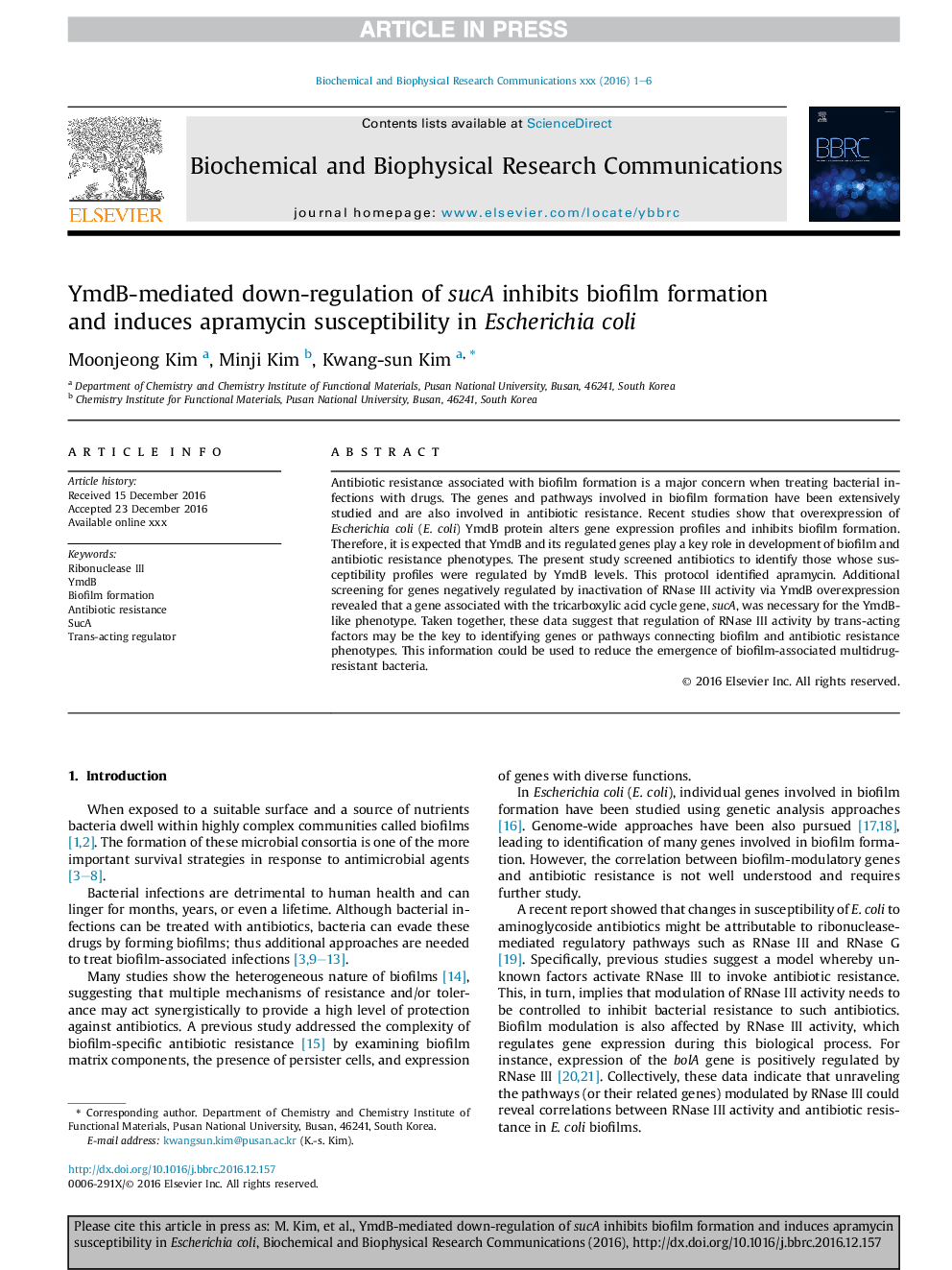| Article ID | Journal | Published Year | Pages | File Type |
|---|---|---|---|---|
| 5505585 | Biochemical and Biophysical Research Communications | 2017 | 6 Pages |
Abstract
Antibiotic resistance associated with biofilm formation is a major concern when treating bacterial infections with drugs. The genes and pathways involved in biofilm formation have been extensively studied and are also involved in antibiotic resistance. Recent studies show that overexpression of Escherichia coli (E. coli) YmdB protein alters gene expression profiles and inhibits biofilm formation. Therefore, it is expected that YmdB and its regulated genes play a key role in development of biofilm and antibiotic resistance phenotypes. The present study screened antibiotics to identify those whose susceptibility profiles were regulated by YmdB levels. This protocol identified apramycin. Additional screening for genes negatively regulated by inactivation of RNase III activity via YmdB overexpression revealed that a gene associated with the tricarboxylic acid cycle gene, sucA, was necessary for the YmdB-like phenotype. Taken together, these data suggest that regulation of RNase III activity by trans-acting factors may be the key to identifying genes or pathways connecting biofilm and antibiotic resistance phenotypes. This information could be used to reduce the emergence of biofilm-associated multidrug-resistant bacteria.
Related Topics
Life Sciences
Biochemistry, Genetics and Molecular Biology
Biochemistry
Authors
Moonjeong Kim, Minji Kim, Kwang-sun Kim,
